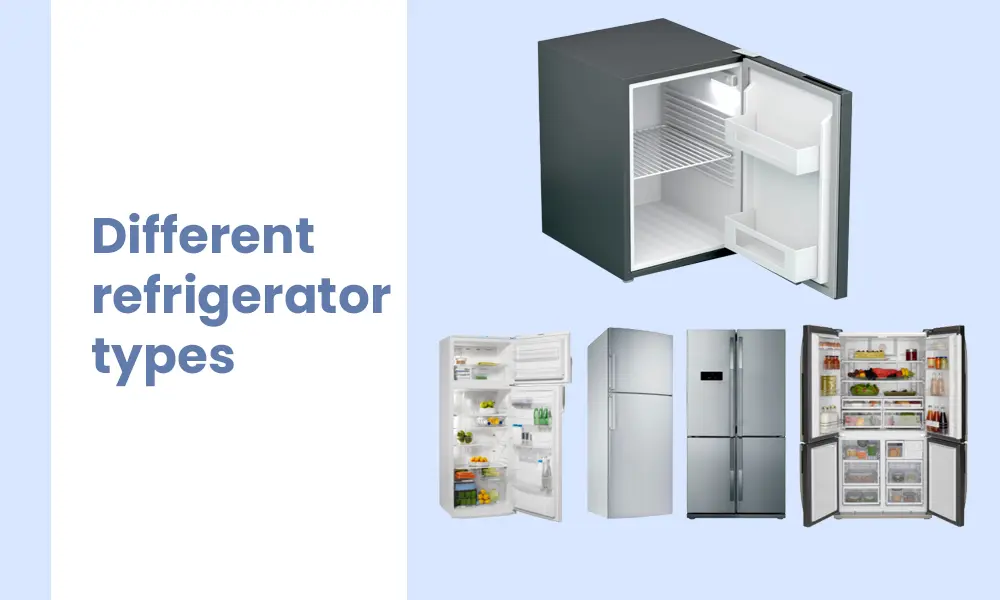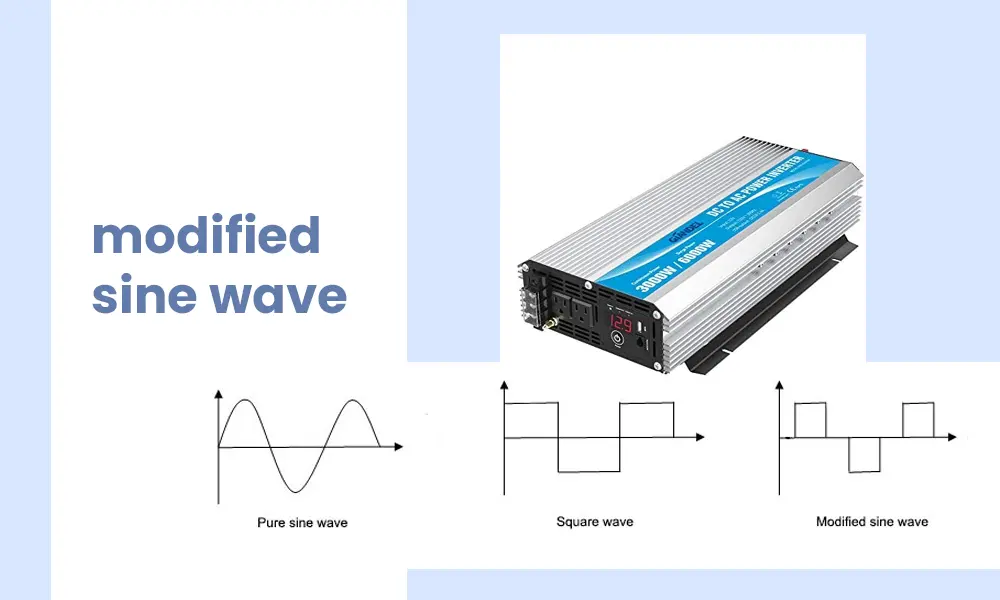First of all, let me say that the type of inverter best suited for your refrigerator depends on the specific requirements of the fridge and the intended use of the inverter.
Before giving you a direct answer, let’s have a simple understanding of what are pure sine wave inverters and modified sine wave inverters.
Pure sine wave inverters produce an AC current that is a close approximation of a true sine wave. Like your main grid power.
This type of inverter is generally considered to be more efficient and produce higher quality power than modified sine wave inverters.
However, pure sine wave inverters may also be more expensive and have lower power capacity than modified sine wave inverters.
On the other hand, modified sine wave inverters produce an AC current that is a modified version of a sine wave.
This type of inverter is generally less expensive and has a higher power capacity than pure sine wave inverters.
Unfortunately, this distorted sine wave can cause damage to sensitive electronic equipment. Some refrigerator models can be damaged too.
Does a refrigerator need pure sine wave?

So, based on what we learned above, my recommendation is to go with pure sine wave inverters for use with refrigerators and other sensitive electronic devices.
Can you run a fridge off a modified sine wave inverter?
Even though, they do lack certain qualities,
YES, you can run a fridge with a modified sine wave inverter! However, your refrigerator model should support this kind of distorted electrical wave.
Usually, they have internal filtering systems which can clear the distorted sine waves into proper electrical waves.
By the way, these kinds of fridges are not cheap.
Understanding pure sine wave inverter
Pure sine wave inverter doesn’t hold any electromagnetic pollution. Moreover, it generates high efficiency and consistent sine wave output. In addition, the output of AC power is far better than the regular power grid.
It also produces a high-frequency technology perfectly fitted for diverse electrical appliances, including a fridge. It is important to note that electrical appliances like refrigerators are very sensitive.
Hence, it demands to be treated delicately. Excessive frequencies of power supply can damage the internal electrical surfaces.
In a nutshell, pure sine wave inverters are the ideal choice for your refrigerator for the following reason:
- It provides high-quality Alternative Current
- It can drive any kind of resistive load
- Finally, a pure sine wave inverter has the highest conversion efficiency
However, on the downside, they have higher technical requirements. Henceforth, it costs quite high than modified sine wave inverters.
Understanding modified sine wave inverter
As the name suggests, it modifies the sine wave. More precisely, it pauses the output waveforms between the range of maximum positive and negative values. Moreover, it increases the user effect of power generation.

However, if you use a modified sine wave inverter, you should avoid inductive power loads.
So, what’s this inductive load means? It refers to high-power electrical appliances. Moreover, these products need to be run through electromagnetic induction. Devices like motors, compressors, and fluorescent lamps require a larger start-up current..
In an exceptional case, when the power quality is moderate, modified sine wave power inverters can fit into the position. However, the disadvantages of the modified sine wave inverter show, it has 20% harmonic distortion.
Hence, there might be some difficulties and issues to smooth out the operation. Moreover, it can result in high-frequency inference resulting in electronic system damage. You compromise this inconvenience for a lower price. The choice is yours!
Apart from these two, there is another choice of inverter for your refrigerator.
Square wave inverter
The square wave produces severe instability in power. Square wave inverter generates poor quality AC current. Moreover, the capacity of power ranges from maximum positive to maximum negative. Hence, it has a poor load capacity. To b more precise, the load capacity ranges from 40-60%.
Unfortunately, they cannot carry an inductive load. Moreover, the excessive load also generates a third harmonic component to increase the capacity of power flow. Often, it can seriously damage the internal circuits due to high power fluctuation.
Due to its contrasting inconvenience, it is nearly obliterated from the market.
Tips for running a fridge on inverters
- Always buy an energy-efficient fridge. Even though the new-age refrigerators are potential energy complaints, take your time to compare 3-4 models.
- Like a fridge, it is also important to buy a good quality inverter. Consider purchasing a potential surge watt capacity.
- It is ideal not to run the inverter at the maximum capacity. Remember, an inverter is capable of handling the watt frequencies for a few seconds only.
- Make sure to calculate the power usage. If you are running two or more products on an inverter, consider calculating the power usage.
Final Say
You see, there is no better choice than a pure sine wave inverter for your fridge. It not only protects home appliances from internal damage but also improves their self-life. It is more efficient than a modified sine wave.

Eng. Matthew Joseph Nandirio is the Founder of walkingsolar.
After graduating from the University of Houston in 2002, matt started working as a Solar Electrical Engineer for several multi-national solar energy companies.
He has a wide range of experiences including solar system requirement analysis, planning, maintaining, debugging and even solar device development through research.
He now shares his 20 years of expertise through his articles on the walkingsolar website.
Further, he is also the author of two books on Solar Technology, “Solar Power for Villages” and “DIY Solar System for Dummies”.
